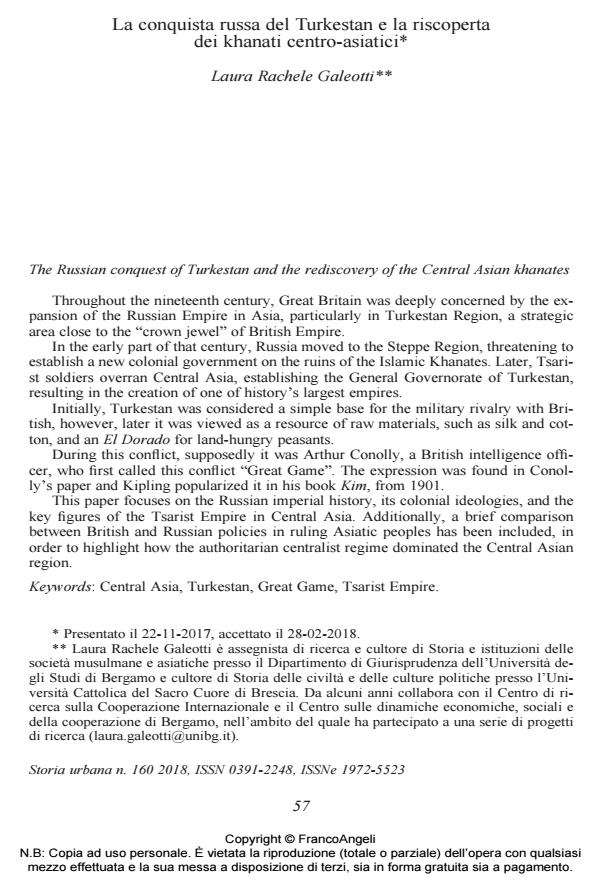The Russian conquest of Turkestan and the rediscovery of the Central Asian khanates
Journal title STORIA URBANA
Author/s Laura Rachele Galeotti
Publishing Year 2019 Issue 2018/160
Language Italian Pages 41 P. 57-97 File size 257 KB
DOI 10.3280/SU2018-160003
DOI is like a bar code for intellectual property: to have more infomation
click here
Below, you can see the article first page
If you want to buy this article in PDF format, you can do it, following the instructions to buy download credits

FrancoAngeli is member of Publishers International Linking Association, Inc (PILA), a not-for-profit association which run the CrossRef service enabling links to and from online scholarly content.
Throughout the nineteenth century, Great Britain was deeply concerned by the expansion of the Russian Empire in Asia, particularly in Turkestan Region, a strategic area close to the "crown jewel" of British Empire. In the early part of that century, Russia moved to the Steppe Region, threatening to establish a new colonial government on the ruins of the Islamic Khanates. Later, Tsarist soldiers overran Central Asia, establishing the General Governorate of Turkestan, resulting in the creation of one of history’s largest empires. Initially, Turkestan was considered a simple base for the military rivalry with British, however, later it was viewed as a resource of raw materials, such as silk and cotton, and an El Dorado for land-hungry peasants. During this conflict, supposedly it was Arthur Conolly, a British intelligence officer, who first called this conflict "Great Game". The expression was found in Conolly’s paper and Kipling popularized it in his book Kim, from 1901. This paper focuses on the Russian imperial history, its colonial ideologies, and the key figures of the Tsarist Empire in Central Asia. Additionally, a brief comparison between British and Russian policies in ruling Asiatic peoples has been included, in order to highlight how the authoritarian centralist regime dominated the Central Asian region.
Keywords: Central Asia, Turkestan, Great Game, Tsarist Empire.
Laura Rachele Galeotti, La conquista russa del Turkestan e la riscoperta dei khanati centro-asiatici in "STORIA URBANA " 160/2018, pp 57-97, DOI: 10.3280/SU2018-160003